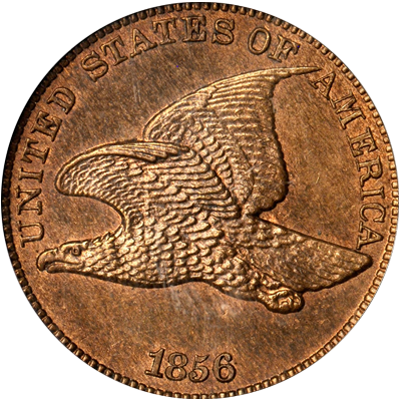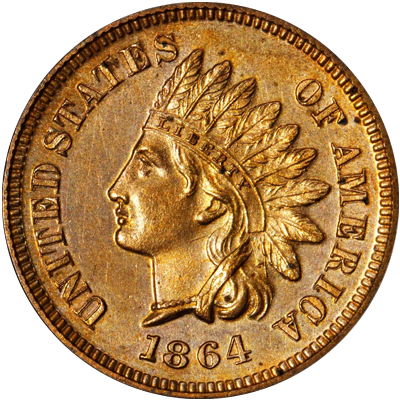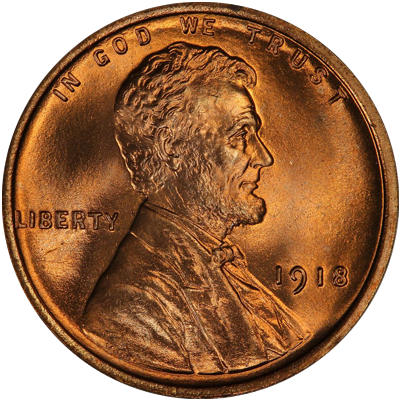While beloved by many collectors today, the large cent did not always enjoy such popularity. In its circulating days, it was perceived as rather cumbersome (imagine carrying around ten half dollars with only ten cents worth of buying power). In addition, they tended to get dirty, and corrode easily, neither of which appealed to the average user. As the price of copper slowly rose, the mint began to look for a replacement – something smaller in size to reduce costs and increase production capacity.
Pattern small cents with the flying eagle design were made in 1856, and the following year, regular production for circulation began. While large cent mintages in the final year were in the range of 5 to 10 million coins annually, some 40 million flying eagle cents were struck in 1857 and 1858. Made from a copper-nickel alloy (88% copper, 12% nickel) they were immediately popular and quickly replaced the large cent in circulation.
From 1859 through 1864, cents bearing an Indian head design continued to be made from copper-nickel, but in 1864, the composition was changed to bronze, which is made up of 95% copper alloyed with 5% zinc and tin. All cents were struck in the Philadelphia mint until 1908, when production also began at San Francisco. The venerable Indian design lasted till 1909, when, for the 100th anniversary of the birth of Abraham Lincoln, his portrait was placed on the cent, where it remains to this day.
While no statistics are readily available, it is likely that a very large proportion of collectors today began their collections with a set of Lincoln Cents. Plentiful and inexpensive enough for kids to save and place in a blue Whitman folder, they were largely responsible for a generation of new collectors that arose from the 1930s through the 1970s. Everyone knew the “tough” dates: 1909-S VDB, 1914-D, 1922 “Plain”, 1931-S and the elusive 1955 Doubled Die, and countless hours were spent checking through the family “penny jar” in search of one of these treasures.
While the obverse of the Lincoln cent has remained largely unchanged since its inception in 1909, the reverse has been redesigned at fifty-year intervals; the wheat stalks being replaced by the Lincoln Memorial in 1959, and after a special bicentennial tribute to the life of Lincoln in 2009, a shield replaced the Memorial building in 2010. Mintages of the Lincoln cent since 1959 have been prodigious with many years exceeding 10 billion pieces struck. Over the course of the past 60 years or so, hundreds of billions of pieces have been made. It’s safe to say that for each man, woman and child in the country today, there are 1,000 cents in existence. Most today reside in jars or boxes, as few people start the day with cents in their pockets – they simply accumulate.
While in recent years there have been calls to discontinue the denomination, production continues. While advocates cite a reduced cost to the mint, the cent’s defenders argue that prices would rise due to a “rounding up” by merchants. There may be a bit of nostalgia at work too, for the passing of the cent would truly bring to a close the longest and most venerated chapter in U.S. numismatics.








